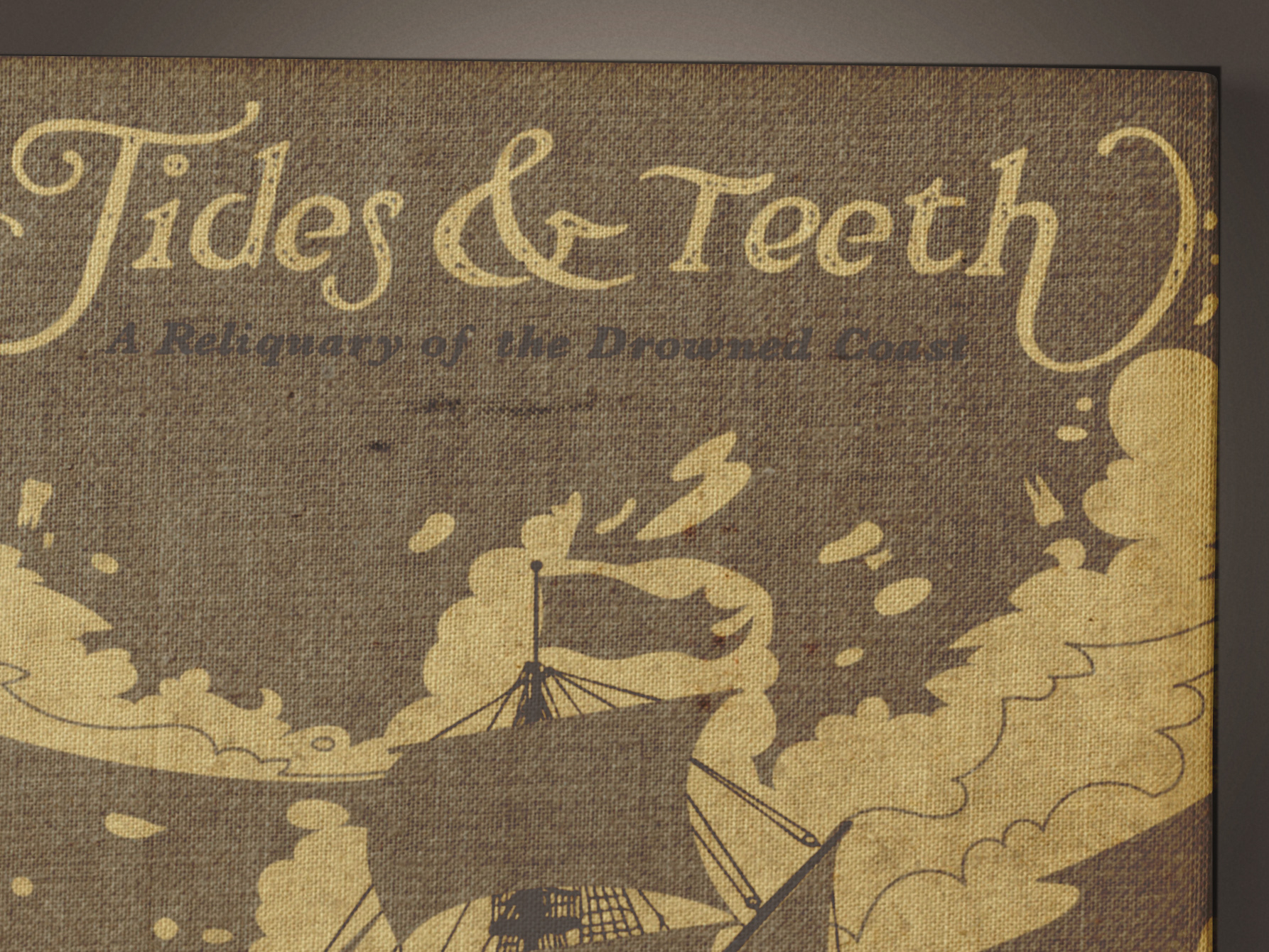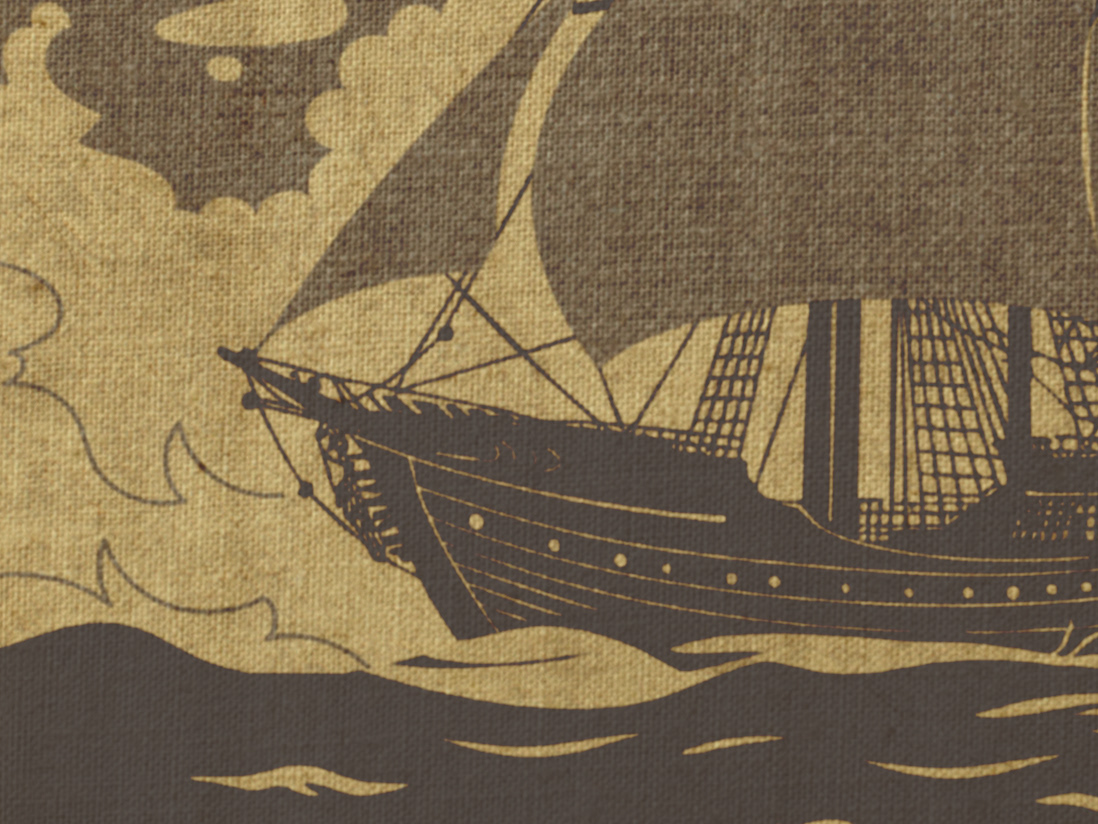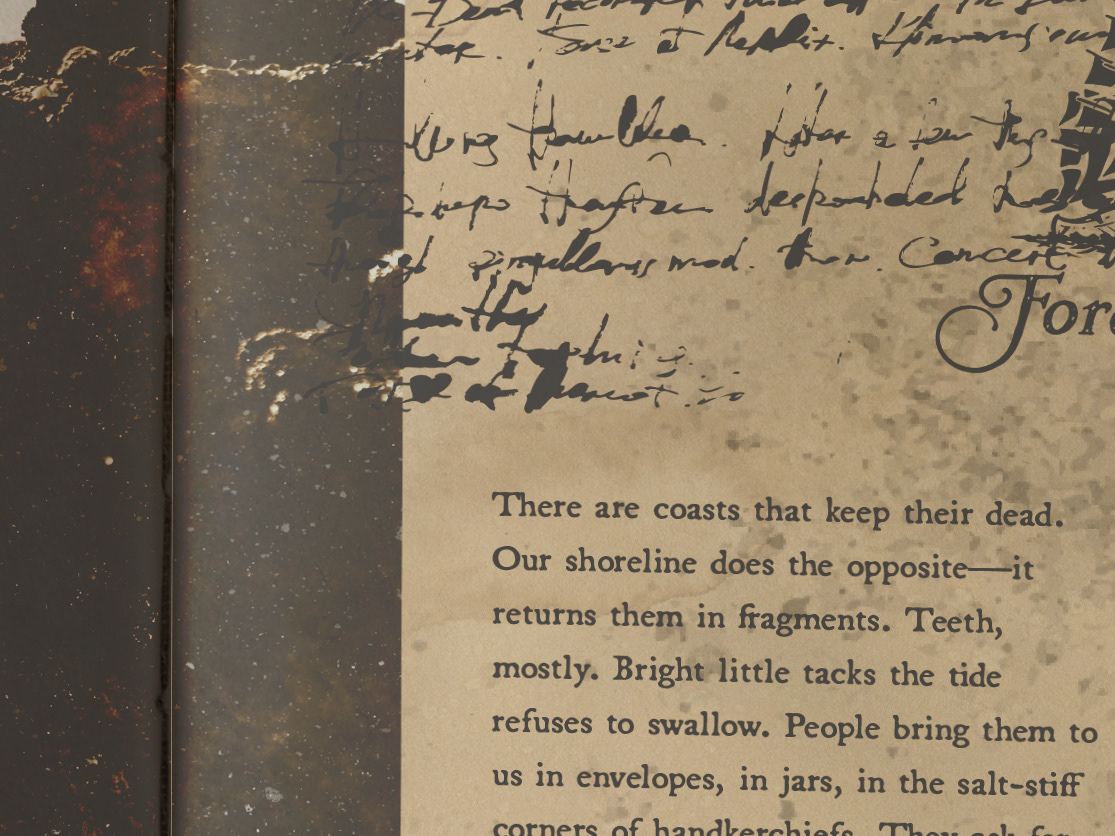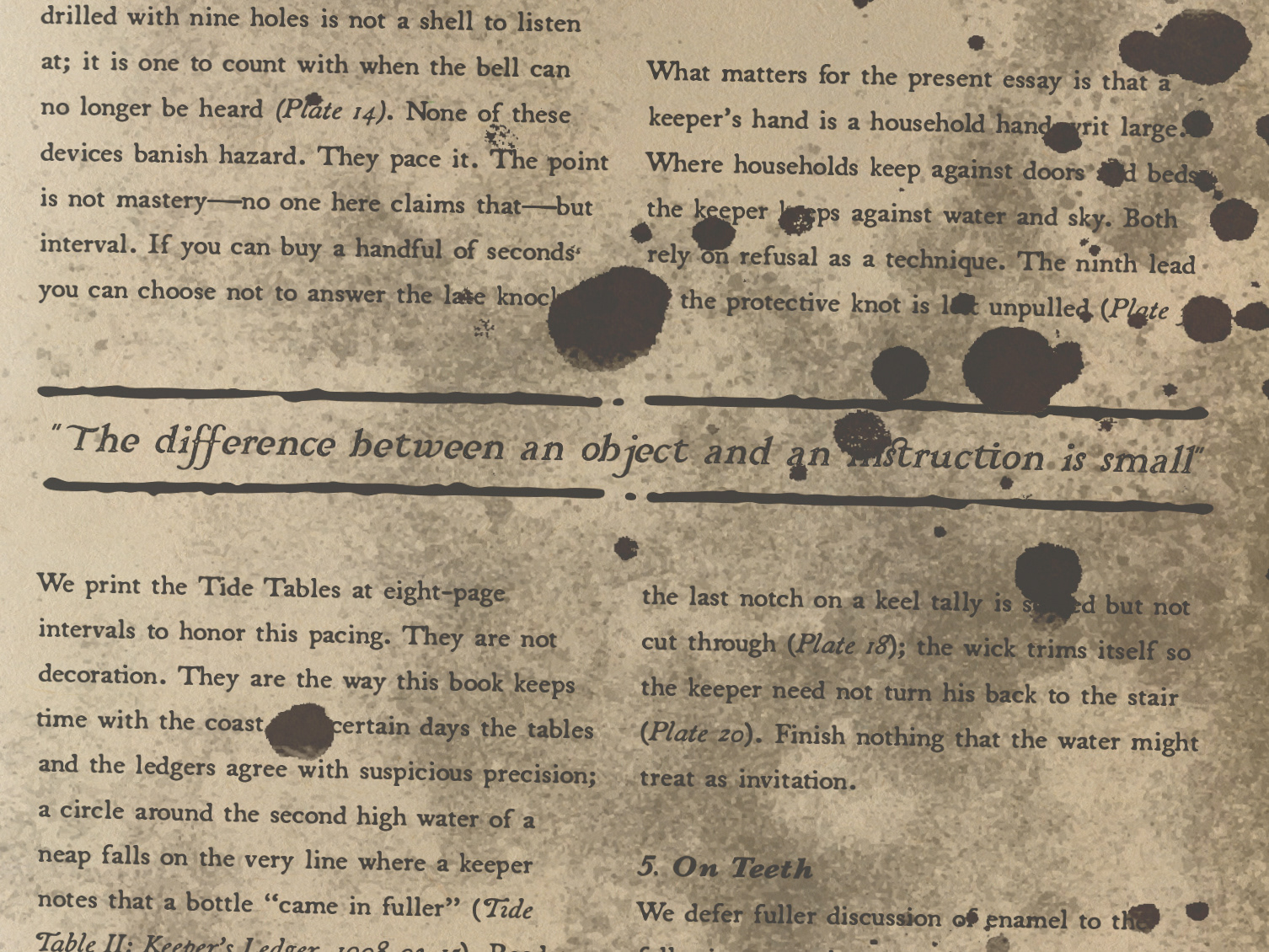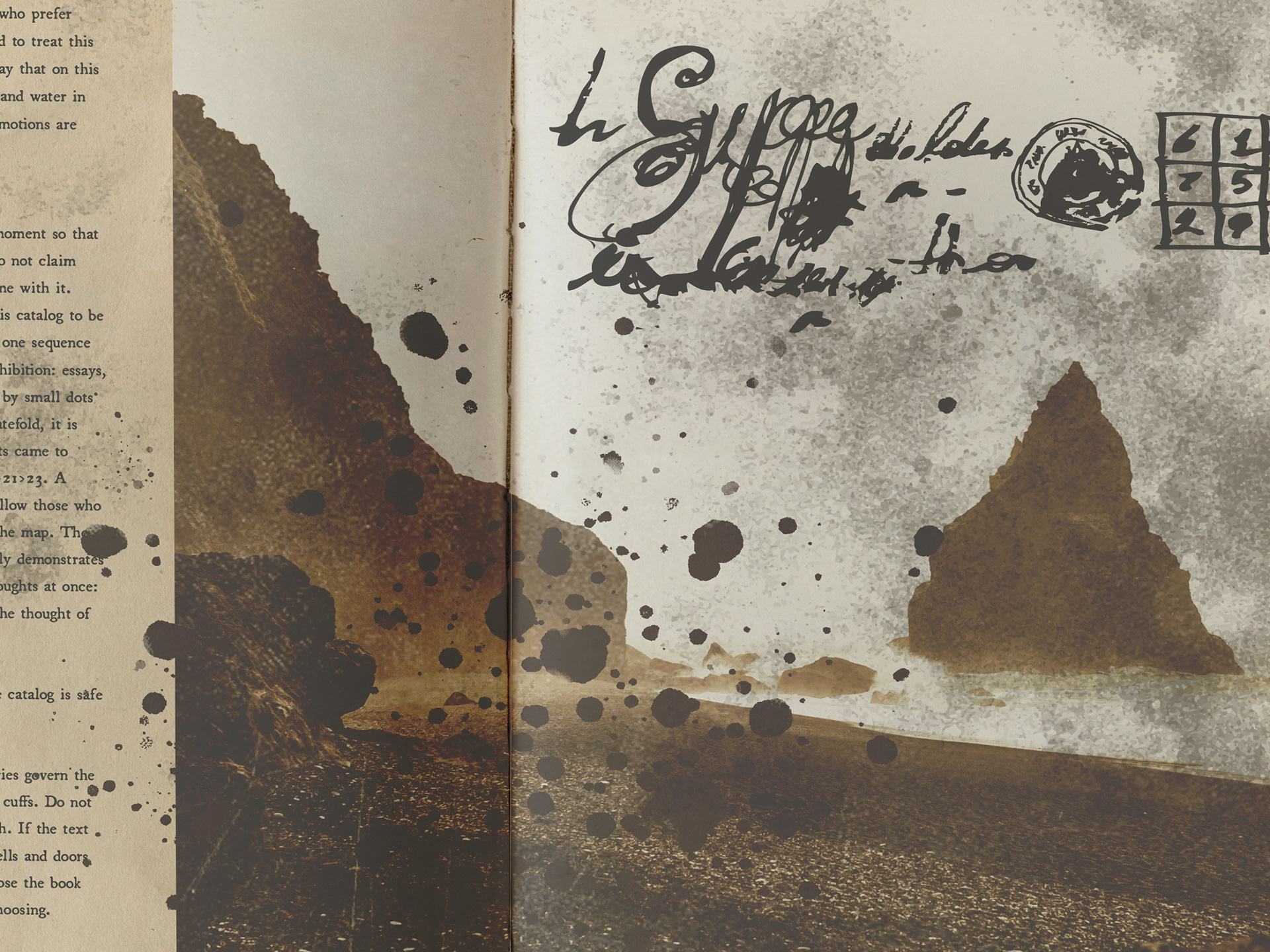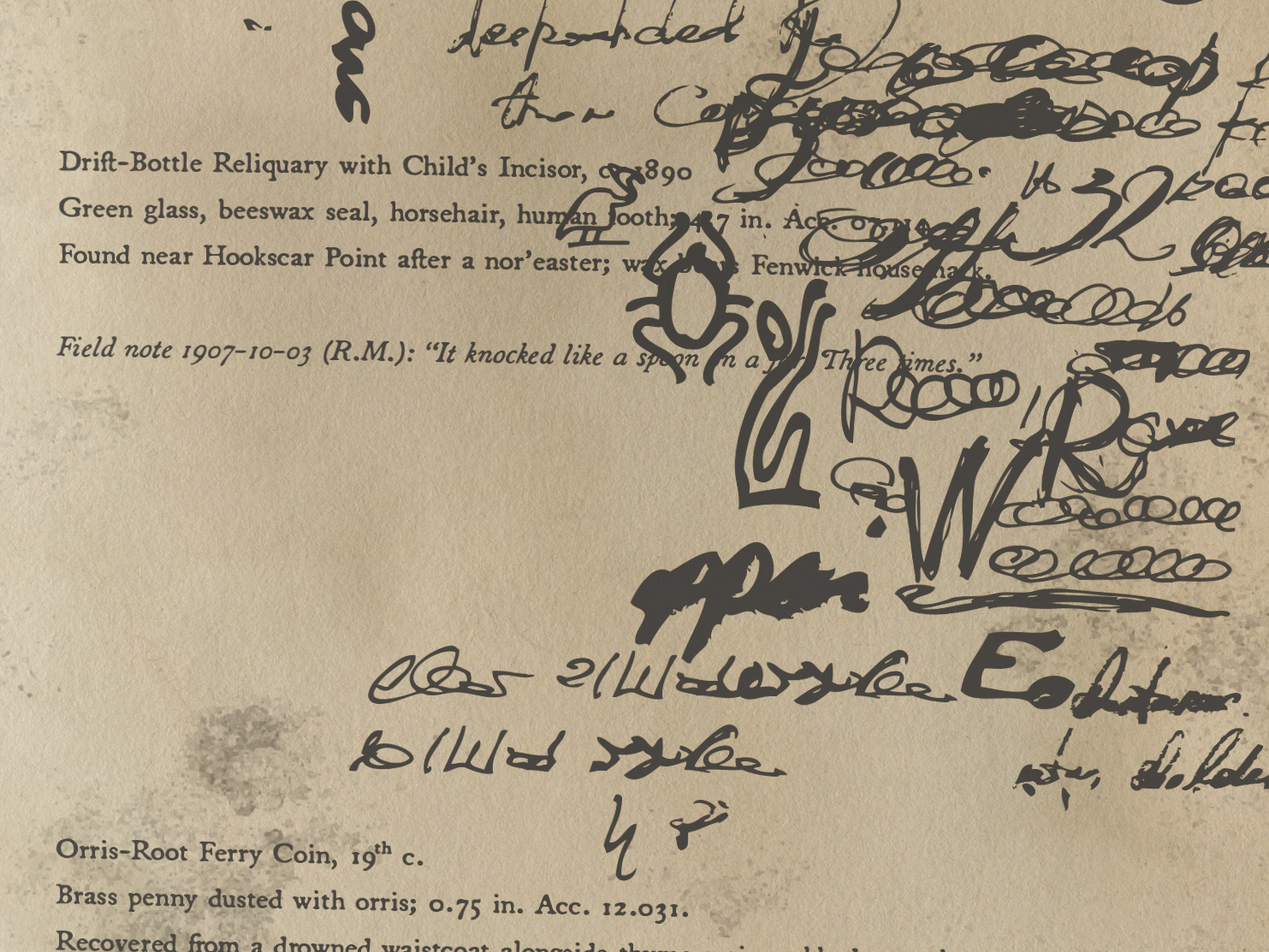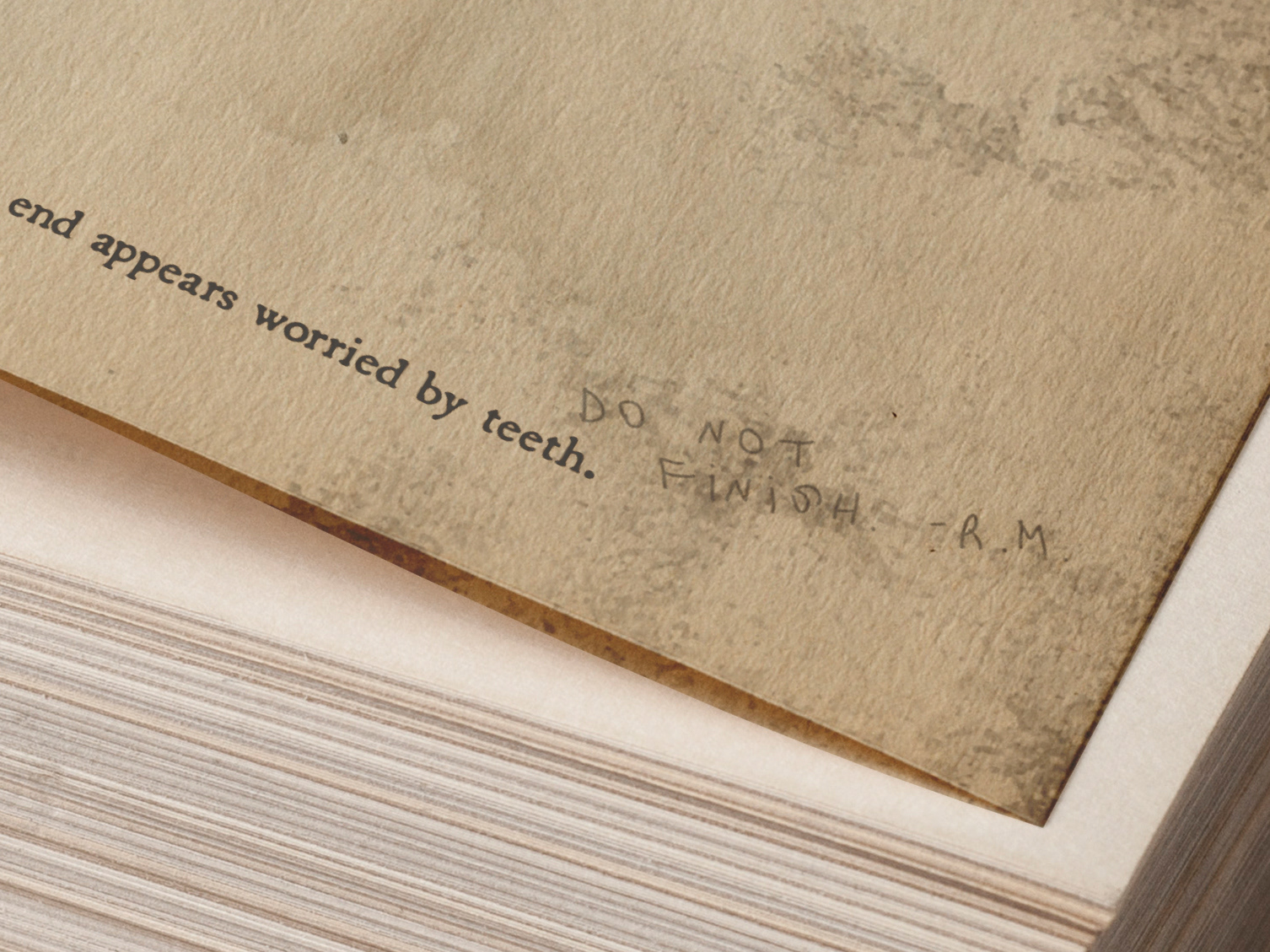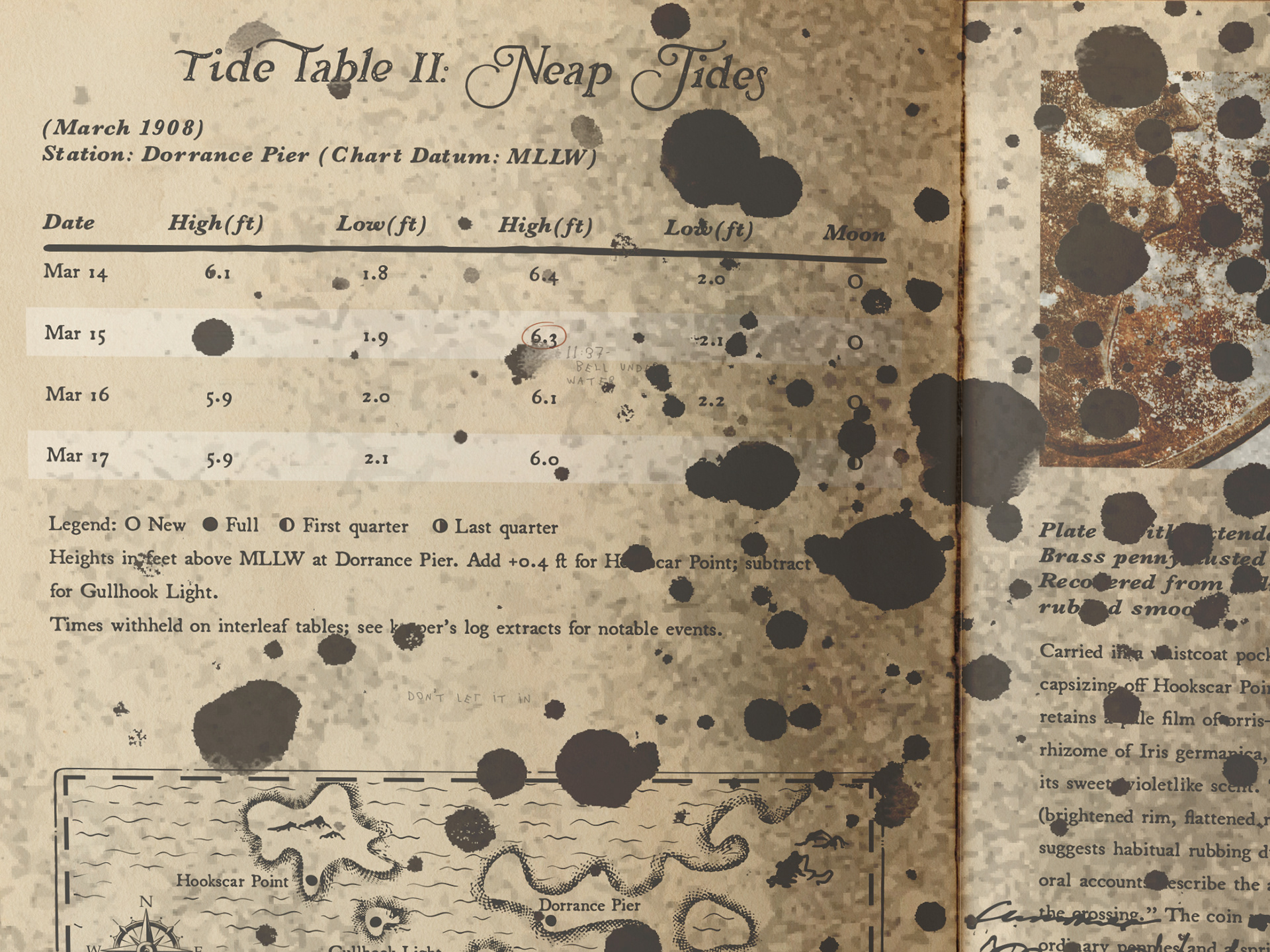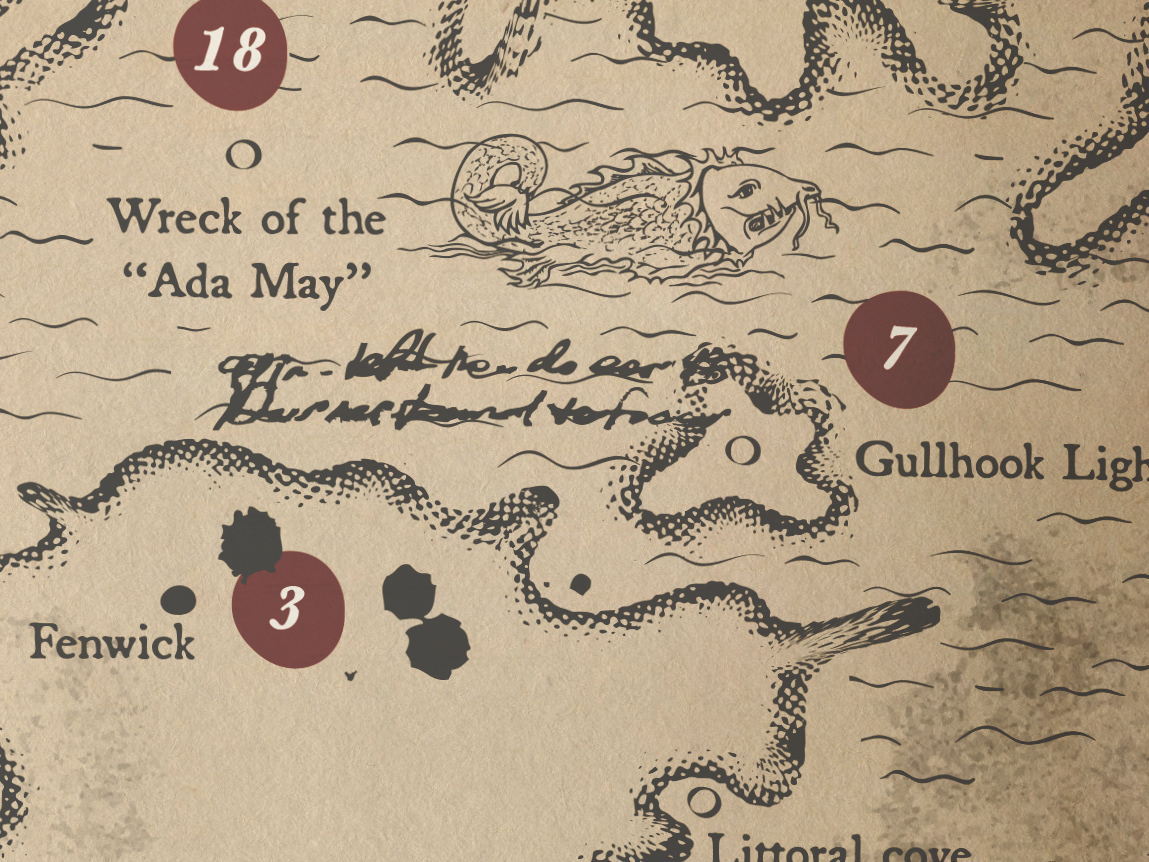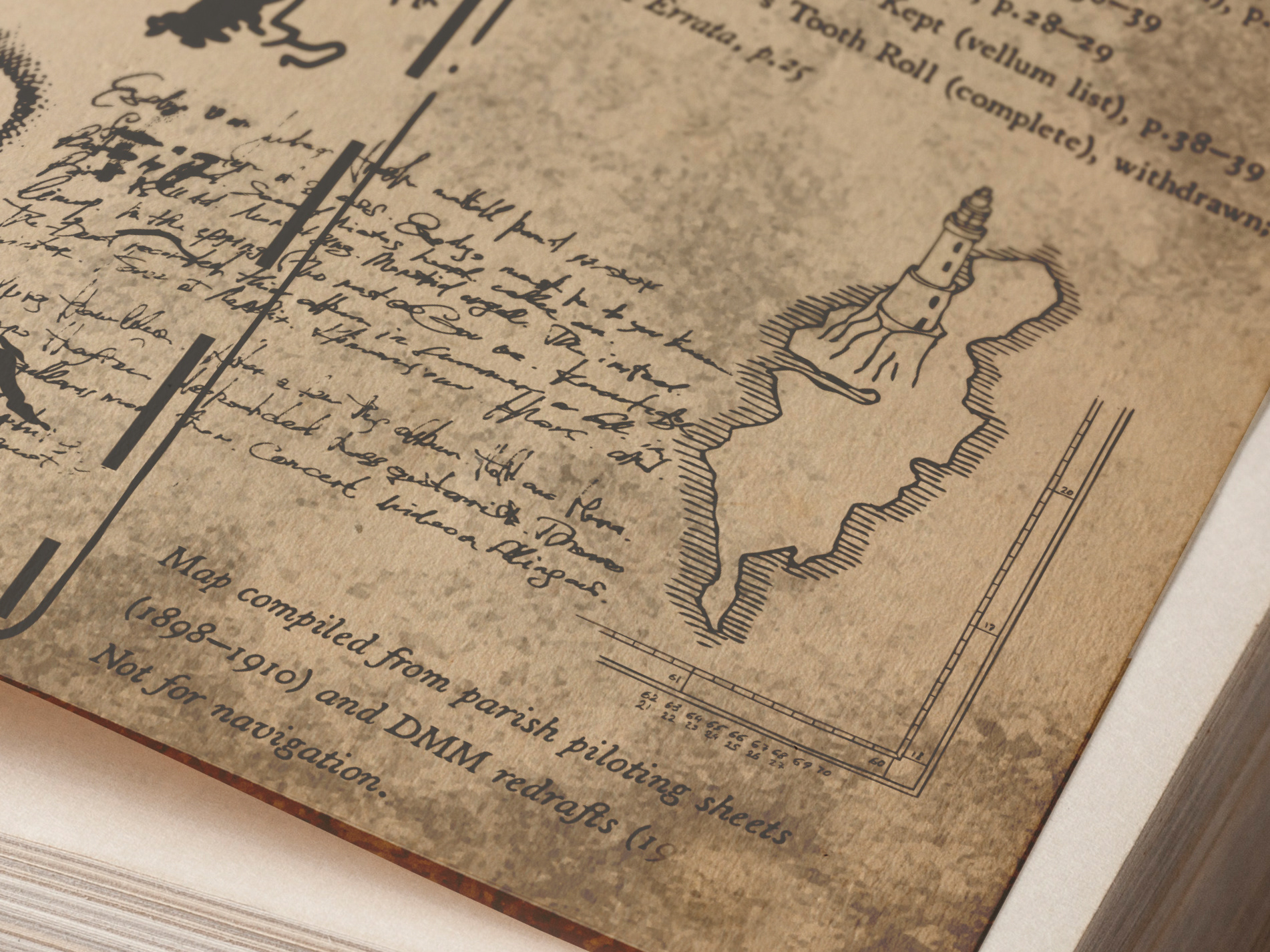A clothbound-style ‘museum catalog’ that blurs scholarship with folklore. I built a classical editorial system, then layered salt stains, printer’s ghosting, and escalating marginalia, so the pages themselves become evidence. The kit ships with styles, textures, and an annotation key for repeatable, print-ready chaos.
Challenge:
Create a clothbound-style catalog that reads as credible scholarship at first glance, but slowly reveals a haunted narrative through physical “evidence” on the page.
Create a clothbound-style catalog that reads as credible scholarship at first glance, but slowly reveals a haunted narrative through physical “evidence” on the page.
Role:
Concept, art direction, copywriting, typography, layout, image compositing, texture design.
Concept, art direction, copywriting, typography, layout, image compositing, texture design.
Process:
Mapped a curatorial taxonomy (plates, accession numbers, field notes) for artifacts from a “drowned coast” (teeth tallies, reliquary bottles, tide tables).
Mapped a curatorial taxonomy (plates, accession numbers, field notes) for artifacts from a “drowned coast” (teeth tallies, reliquary bottles, tide tables).
Built a restrained typographic system and 9-column grid: classical serif for body, small-caps captioning, accession-number styles (GREP rules for automatic formatting).
Authored curatorial voice + an unreliable marginalia layer that escalates: penciled corrections, circled tide values, redactions, hidden acrostics, and notes that begin to “answer back.”
Created a texture library (scuffed paper, salt staining, printer’s ghosting) from hand-made scans and overlayed it non-destructively; established repeatable abrasion masks to “age” pages consistently.
Designed cover and case concept: linen-print simulation with foil-knockout title, deckled-edge mockups, and a spine system for volume/plate indexing.
Production kit: InDesign masters, paragraph/character styles, hyperlink cross-refs for plate callouts, press-ready export profiles, and an annotation key for controlled chaos.
Solution:
A museum-catalog system that starts pristine and progressively degrades: margins crowd, notes intrude, and textures scar the careful typesetting, so the book itself becomes evidence. Readers can navigate via sober plate records, but the marginalia reveals the folklore.
A museum-catalog system that starts pristine and progressively degrades: margins crowd, notes intrude, and textures scar the careful typesetting, so the book itself becomes evidence. Readers can navigate via sober plate records, but the marginalia reveals the folklore.
Outcome:
A believable artifact that rewards close reading: early viewers double-took it for a real catalog, and the production kit makes the effect reproducible across new spreads. Deliverables include cover design, curated interiors (essays, plates, tide tables), and a reusable distress/annotation toolkit for future volumes.
A believable artifact that rewards close reading: early viewers double-took it for a real catalog, and the production kit makes the effect reproducible across new spreads. Deliverables include cover design, curated interiors (essays, plates, tide tables), and a reusable distress/annotation toolkit for future volumes.
